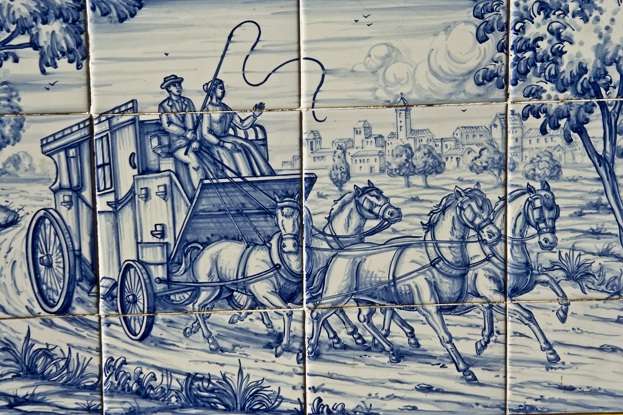Mexican antique tiles are renowned for their rustic look and diverse surface textures. With swirling marks, artworks and murals, the tiles of Mexico render a historic expression of artistry. Read our guide for more facts and information…
Tiles evolved as earthenware pottery developed and the earliest tiles were designed for floors. Medieval tiles had lead glazes with designs stamped into the clay before the glazing process. They usually adorned churches and august homes as they were expensive.
Early Mexican Tiles
Beautiful tiled surfaces of the pyramids and ancient ruins of Babylon and Greece reveal that tiles have been used about 4000 years ago. The Middle East developed decorative tiles by using tin glaze techniques that allowed intricate patterns. Islamic conquests led to the spread of its art and architecture through Spain. The Spanish styles spread via Majorca resulting in the art of majolica. The Spanish colonization of America brought the techniques of majolica and Talavera into Mexico. Therefore, Mexican tiles evolved with influences of Italian, Spanish, Arabian and Chinese styles. Saltillo tiles are basically terra-cotta variants that originated in Mexico’s Saltillo. Unlike ceramic tiles, Saltillo tiles are unglazed and porous and are still popular for their antique texture. Manganese finishes and terracotta shades are characteristic of antique Saltillo tiles.
Antique Talavera Tiles
Apart from glazed pottery, Talavera also illustrates the handmade glazed Mexican tiles. The exuberant beauty of the tile found use in azulejos and became a quintessential part of Puebla’s ornate architecture. With vibrant colors and small sizes, it blends and accentuates warm earth tones. Talavera tiles echo the Chinese porcelain and Moorish tile designs and they are common in patios and facades of homes and churches of Mexico. Talavera came to Mexico from a Spanish town called Talavera de la Reina during the Spanish colonization of America. The bold and definite designs are common in stair raisers, wall panels and other vertical applications. Azulejos signified prosperity and brought about the famous metaphor ‘never become capable of building a house with tiles’, which means that a person would not amount to any good thing in life. Casa de los Azulejos, an eighteenth century place in Mexico, is a well-known example of Talavera tile architecture. The frontage on three sides of the palace is adorned with expensive tiles in blue and white.
Mexican Tile Murals
Mexican art is indeed an artistic portrayal of landscapes, plants, people and symbols of its rich culture displayed in lively colors. Murals are created on various tile materials, such as porcelain, ceramic and travertine, though ceramic is prevalent. Authentic Mexican murals involve only hand-painting on hand-crafted tiles. Adobe tiles and Talavera tiles are culturally authentic and expensive.
Mexican antique tiles are carved into the desired shape or shaped with wooden frames. Handcrafted tiles are traditional artifacts that exhibit the artisan’s creativity with regard to the cultural heritage of Mexico. They are distinguished for their role in architectural, decorative and utilitarian aspects of Mexican tradition.





